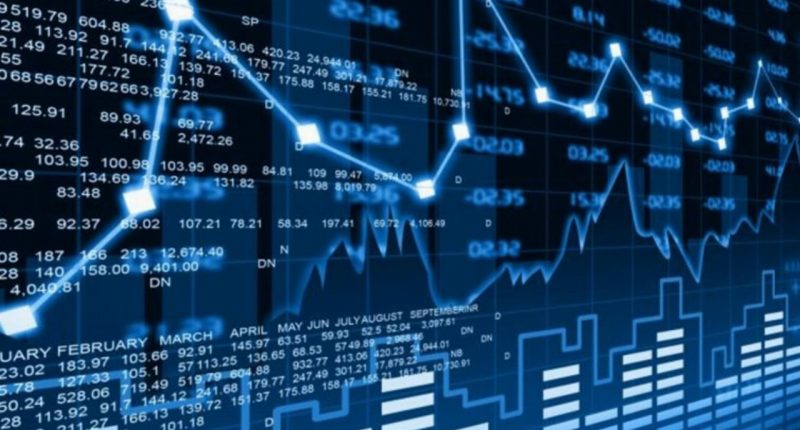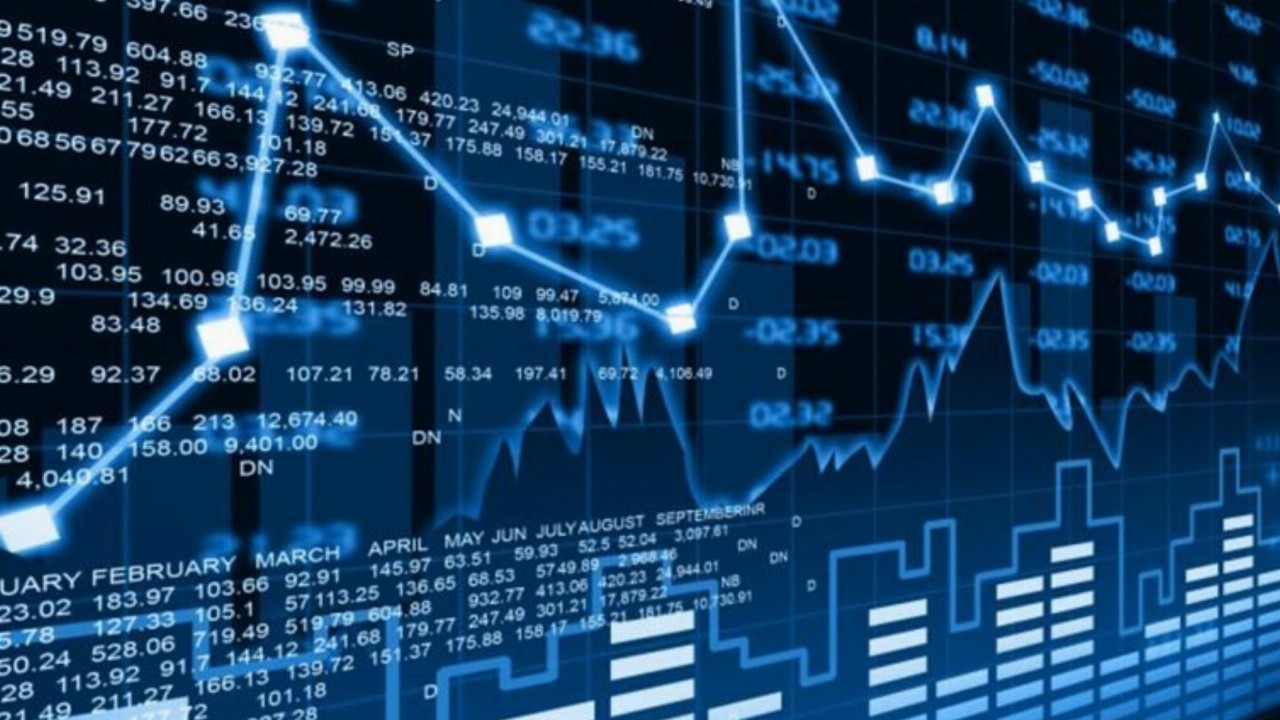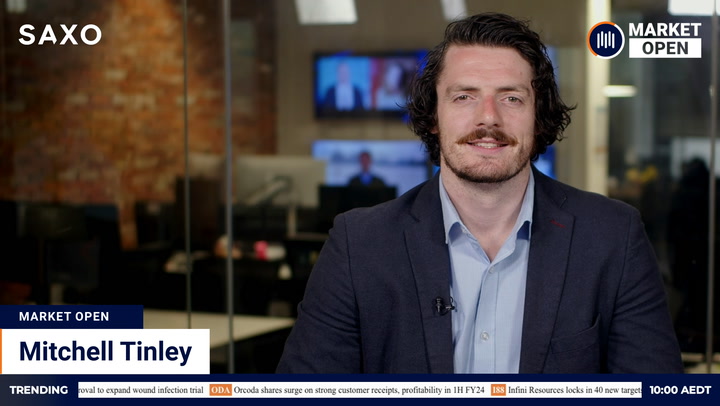A relief rally in the US continued overnight, setting up the ASX for solid gains ahead of this afternoon’s Reserve Bank policy update.
ASX futures rose 42 points or 0.61 per cent. The Nasdaq Composite led for a second session as US stocks added to Friday’s gains.
The outlook for Australian trade was tempered by a bounce in the dollar, caution ahead of today’s RBA update and a downturn in iron ore after Chinese state planners threatened to crack down on rising prices. Oil, copper and gold moved higher.
Wall Street
US stocks rose after broker upgrades encouraged investors to snap up some of the biggest losers of the market’s worst month since the early days of the pandemic. Tesla, Netflix and Spotify all jumped as the Big Tech spearheaded the advance.
The S&P 500 firmed 84 points or 1.89 per cent. The tech-heavy Nasdaq Composite surged 469 points or 3.41 per cent. The “tech-lite” Dow Jones Industrial Average added 406 points or 1.17 per cent.
The rallies helped the major indices trim their largest monthly declines since March 2020. The S&P 500 cut its January loss to 5.3 per cent, the Dow 3.3 per cent and the Nasdaq 9 per cent.
Beaten-up tech stocks rebounded after brokers suggested recent weakness offered an attractive entry point. Netflix jumped 11.13 per cent and Spotify 13.46 per cent following upgrades from Citi. An “Outperform” rating from Credit Suisse helped lift Tesla 10.68 per cent. Chip maker Nvidia bounced 7.21 per cent.
Boeing was the Dow’s best performer, rising 5.08 per cent after winning an order from Qatar Airways worth up to US$34 billion.
This month’s declines came as investors reduced their exposure to companies that depend most on borrowing to fund growth. Volatility increased last week after Federal Reserve Chair Jerome Powell refused to rule out rate increases at every Fed meeting this year to curb soaring inflation.
“If markets were looking for reassurance from the Federal Reserve last week about the pace of policy tightening, they didn’t get it, with Powell insisting that all Fed policy options were open for March and beyond. While this seems entirely sensible, it wasn’t the message increasingly nervous markets wanted to hear,” Michael Hewson, chief market analyst at CMC Markets UK, said.
Fed board member Raphael Bostic warned over the weekend the central bank could raise its key rate by half of a percentage point next month if inflation does not abate. However, his personal preference was for three increases this year of a quarter of a percentage point each.
The S&P 500 dipped briefly into intraday correction territory last week but avoided a close more than 10 per cent below its peak. The Nasdaq Composite finished January roughly 13 per cent from its November high.
This month’s declines have unsettled investors who believe the first month sets the tone for the rest of the year.
“The January barometer, which states ‘as goes January, so goes the year’, will be negative, implying investors are in for a challenging year,” Sam Stovall, chief investment strategist at CFRA Research, said.
Australian outlook
Futures action suggests modest enthusiasm for embracing strong US leads. There are at least three factors at play: uncertainty over this afternoon’s RBA rates outlook, a bounce in the dollar and the danger that some end-of-month institutional “window dressing” will be unwound.
RBA board members gather this morning under pressure to fall into line with other central banks planning rate increases later this year. The Australian bank has consistently talked down the prospect of raising the cash rate this year but now finds itself out of line with the global mood.
Economists from most of the major banks expect the RBA to use the first meeting of 2022 to reset its outlook for the year, end its quantitative easing program and prepare markets for increases as soon as August. However, there are no guarantees this board will give the market what it expects. The Rate Statement is published at 2.30 pm AEDT.
The dollar rebounded overnight, rising 1.06 per cent to 70.7 US cents. A strengthening dollar aids importers, but is a net negative for Australia’s export-driven economy.
The S&P/ASX 200 dipped 16.5 points or 0.24 per cent yesterday as the curtain fell on the ASX’s worst month since March 2020. Even so, there is a danger of further ructions this session as institutional investors re-jig their portfolios at the start of a new month.
Tech stocks look likely to lead after the three ‘Big Tech’ sectors outperformed in the US. The consumer discretionary sector (Tesla, Amazon) jumped 3.81 per cent, technology 2.68 per cent and communication services (Netflix, Alphabet) 2.4 per cent.
All 11 US sectors advanced. The materials sector gained 1.44 per cent, industrials 1.1 per cent and financials 0.89 per cent.
A busy day for domestic economic data includes a January manufacturing survey at 8.30 am and December retail sales at 11.30 am. Interim earnings are due from Credit Corp.
IPOs: two listings originally scheduled for today have been pushed back into later in the month. My Rewards International on Friday is currently the only new offering scheduled for this week, according to the ASX.
Commodities
Iron ore fell after China pledged to crack down on “speculators” after prices rebounded more than 50 per cent from last year’s lows. The National Development and Reform Commission attacked “abnormal fluctuations” in pricing after ore prices surged last week.
“We found a speculative factor in the recent fast price hike,” the state planning body said in a statement. “We’ll consider taking more powerful and effective measures to ensure the stability of iron ore prices,” they added.
The spot price for ore landed in China declined US$6.15 or 4.25 per cent to US$141.75 a tonne. Prices climbed 7.6 per cent last week towards US$150 a tonne for the first time since September.
BHP‘s US-traded depositary receipts declined 0.97 per cent. Rio Tinto fell 2.35 per cent in the US and 3.73 per cent in the UK.
Oil scaled fresh seven-year highs, supported by the threat of sanctions and supply disruptions if Russia invades Ukraine. Brent crude settled US$1.18 or 1.3 per cent ahead at US$91.21 a barrel.
The international oil benchmark climbed 17.3 per cent during a month defined by geopolitical tensions in eastern Europe and the Middle East. The OPEC+ oil cartel meets this week under renewed pressure to increase production faster than the current timetable.
Gold rebounded from a six-week low. Metal for April delivery settled US$9.80 or 0.6 per cent higher at US$1,796.40 an ounce. The NYSE Arca Gold Bugs Index rallied 3 per cent.
Copper edged higher in thin trade as Chinese markets closed for the Lunar New Year. US-traded copper firmed 0.3 per cent to US$4.325 a pound on Comex.
“Trading will be relatively quiet throughout the whole week because of the Chinese New Year. But at the moment base metals are supported by benign equity markets and dollar pushing metals up,” Commerzbank commodity analyst Daniel Briesemann told Reuters.







